Introduction to Awesome texture paint wall design
Texture paints represent a unique category of wall finishes that enhance the aesthetic appeal of interiors by introducing varied tactile surfaces and visual depth. Unlike standard paints, texture paints are formulated with special additives that allow for the creation of three-dimensional effects, providing homeowners and designers the opportunity to transform bland walls into visually striking features. The composition of texture paints includes a mixture of resins, pigments, and additives such as sand or beads, enabling them to achieve a wide range of textures, from stucco to a smooth, polished look.
The rising popularity of texture paints can be attributed to their versatile application and numerous benefits for wall design. Firstly, they offer a significant aesthetic enhancement, allowing individuals to express their creativity and personal style in unique ways. This versatility means that texture paints can be used in various settings, whether it’s a contemporary living room, a cozy bedroom, or a commercial workspace. Each finish creates a distinct look, contributing character and individuality to the space.
Furthermore, texture paints are not merely decorative—they also serve practical purposes. They can help to conceal imperfections on walls, such as minor repairs or uneven surfaces. The added material thickness often improves the paint’s durability as well, making it suitable for high-traffic areas. Additionally, the tactile quality of texture paints can create a more dynamic interaction with light, casting intriguing shadows and reflections, thus enlivening spaces. Given these factors, texture paints have become a favored choice among homeowners and decorators looking to upgrade their interior design while adding layers of depth and character to their living or working environments.
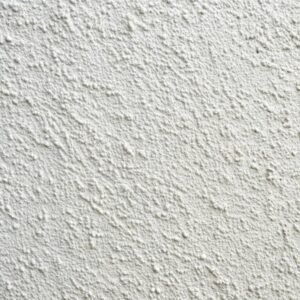
Types of Texture Paints
Texture paints come in various formulations and application methods, each offering unique attributes that can dramatically influence the aesthetics of a space. The primary categories are based on composition and the means of application, including acrylic, latex, and oil-based texture paints, along with methods such as spray, brush, and roller applications.
Acrylic texture paints are water-based and known for their fast-drying properties. They offer excellent durability and are resistant to peeling and fading, making them suitable for both interior and exterior applications. Acrylic paints can be used with a variety of textures, allowing homeowners to create intricate designs that enhance any surface. Their versatility is particularly beneficial in living rooms and bedrooms, where a creative touch can redefine a space.
Latex texture paints are also water-based but differ in terms of finish and flexibility. These paints dry quickly and are easy to clean up, making them ideal for household projects. They provide a softer finish compared to acrylics and can be used for creating subtle textures that evoke a sense of comfort. Latex paints are particularly popular for application in areas such as children’s rooms or other intimate settings, where maintaining a warm atmosphere is essential.
On the other hand, oil-based texture paints offer rich colors and a glossy finish, giving rooms a sophisticated appearance. These paints dry slower than their water-based counterparts but provide a tough finish that stands up well to harsh conditions. Their ability to resist moisture makes oil-based paints an excellent choice for kitchens and bathrooms, where durability and water resistance are paramount.
In addition to the composition of paint, the method of application significantly affects the final look of the textured wall. Spray application allows for even coverage and is efficient for larger areas, while brush and roller techniques provide more control for intricate patterns. Each method can yield varying levels of texture, utilizing the inherent qualities of the underlying paint type.
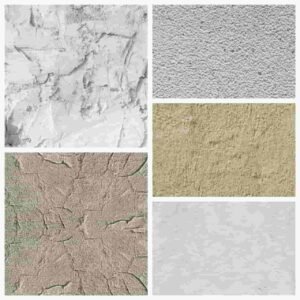
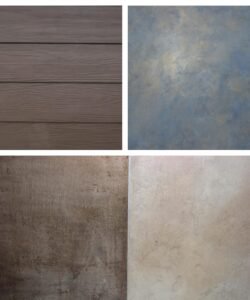
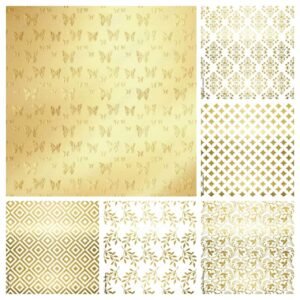
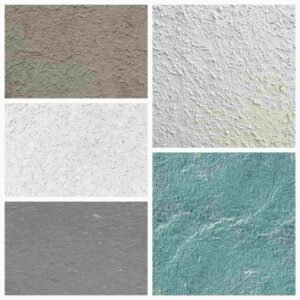
Techniques for Applying Texture Paint
Applying texture paint can significantly enhance the aesthetic appeal of any space. To achieve the desired results, it is essential to understand and implement a variety of techniques. Here we will explore methods such as sponging, rag rolling, and combing, providing detailed instructions and tips for each application.
Starting with the sponging technique, one can create a soft, mottled effect. Begin by preparing the surface: ensure it is clean, smooth, and properly primed. Using a natural sea sponge, dip it lightly into the texture paint, allowing it to absorb the paint without dripping. Press the sponge against the wall using a gentle twisting motion to create random patterns. Repeat this process, blending the edges of each application for a seamless appearance.
The rag rolling technique offers a unique, textured finish. For this method, prepare the wall surface as before. Take a rag, roll it up, and dip it into the texture paint. Wipe off excess paint to prevent drips, then roll the rag gently against the wall. This application creates a layered effect, and alternating colors can add depth. It is recommended to work in small sections to maintain control over the pattern.
Combing is another method that yields a distinctive linear texture. After applying a base coat and allowing it to dry, use a combing tool or a stiff brush. Lightly drag it through the wet texture paint in vertical or horizontal strokes to form lines or patterns. For more intricate designs, experiment with different combing tools. Make sure to follow safety precautions during the application process, such as wearing gloves and using a mask if necessary.
In conclusion, mastering various techniques for applying texture paint can transform ordinary walls into striking features. By experimenting with sponging, rag rolling, and combing, one can achieve a customized look that complements any interior design. Remember to prepare surfaces adequately and respect safety guidelines for optimal results.
Choosing the Right Texture for Your Space
Selecting the appropriate texture paint for your home or office can significantly impact the overall ambiance and aesthetic appeal of the space. To begin with, it is essential to consider the dimensions of the room. In smaller areas, lighter textures tend to create an illusion of greater space, while heavier textures can add depth and warmth to larger rooms. For instance, a subtle stucco finish might work well in a compact area, contributing to both visual interest and comfort.
Lighting is another crucial factor in choosing texture paint. Natural light can make certain textures stand out more vividly, while artificial lighting can soften their appearance. Rooms with ample sunlight might benefit from bolder textures that can create dramatic shadows and highlights, enhancing the sense of space. Conversely, spaces with limited natural light can be enhanced by lighter, smoother textures that reflect more light, creating a brighter environment.
Existing decor and personal style are also vital in this selection process. A modern aesthetic often pairs well with sleek textures such as a smooth concrete finish or a subtle metallic sheen, complementing contemporary furnishings. On the other hand, those leaning towards a rustic theme may find that heavy, textured finishes reminiscent of aged plaster or distressed wood align perfectly with their vision. Moreover, consider using contrasting textures within an area to define space or create focal points, such as pairing a textured accent wall with flat finishes on adjacent surfaces.
Ultimately, the key to choosing the right texture paint lies in balancing size, lighting, decor, and personal preferences. This thoughtful approach allows homeowners and office designers to create cohesive and visually appealing environments that reflect their unique style while adding depth and character to their spaces.

Popular Texture Paint Design Ideas
Texture paints have gained immense popularity in interior design due to their ability to transform ordinary spaces into extraordinary ones. One of the most sought-after ideas is creating a feature wall. A single wall dressed in a bold texture can serve as a stunning focal point in a room. For instance, a deep-colored suede finish can bring warmth and sophistication to a living area, while a more vibrant sponge or rag-rolled technique can add a playful touch to a child’s room. When choosing a color palette, consider complementary hues that enhance the texture rather than compete with it.
Another innovative approach is to apply texture paint across an entire room, giving a uniform yet dynamic finish. For an elegant ambiance, opt for a smooth plaster-like texture in soft, neutral shades. This can help in creating a calming environment that feels spacious and inviting. Alternatively, incorporating bold geometric patterns using texture paints can add a contemporary feel to spaces such as home offices or modern dining rooms. Select colors that resonate with your taste, but ensure they harmonize with existing decor elements.
Kitchen and bathroom spaces can also benefit from the application of texture paints. In kitchens, a waterproof textured finish can act as a stylish backsplash, while in bathrooms, a moisture-resistant textured technique can add visual interest, enhancing the luxury feel of these areas. Finally, the use of metallic or glitter-based texture paints can elevate any space, reflecting light and creating an enchanting atmosphere. Such finishes work beautifully in accent areas, such as behind mirrors or above mantelpieces, emphasizing the transformative power of texture paints.
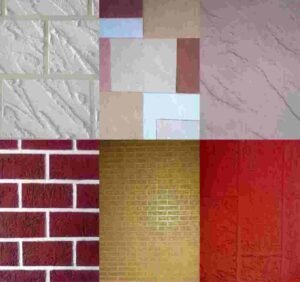
Maintenance and Care for Texture Painted Walls
Texture-painted walls add a unique dimension to any space, but maintaining their appearance requires specific care to ensure longevity and aesthetic appeal. Cleaning textured surfaces can be a bit more complicated than their smooth counterparts due to their uneven surfaces. It is advisable to start with a gentle approach.
Regular dusting with a soft brush or a microfiber cloth will prevent the accumulation of dirt and debris. For deeper cleaning, a mild soap solution is effective. Use a soft sponge or cloth to wipe the surface, avoiding excessive water which can saturate and damage the underlying paint. For stubborn stains, a diluted vinegar solution may be utilized, but it is important to test any cleaning agent on an inconspicuous area first to avoid discoloration.
Repairs are inevitable, especially in high-traffic areas where chips or scuffs can occur. For minor damage, touch-up paint that matches the original finish can effectively minimize the imperfections. For deeper gouges, a patching compound is recommended. Application involves filling the damaged area, allowing it to dry, and then blending it with the surrounding texture using appropriate tools such as a stippling brush or sponge. In some cases, repainting an entire section may be necessary to achieve a uniform appearance.
To rejuvenate textured walls over time, it may be beneficial to refresh the topcoat. This process not only revitalizes the color but also offers protection against wear and tear. Before applying new paint, ensure that the wall is clean and free from caked dust or greasy residues. Following these steps helps maintain the beauty and functionality of textured wall designs, ensuring they continue to enhance the aesthetic of your space for years to come.
Common Mistakes to Avoid
When embarking on a project involving texture paints, it is crucial to keep certain potential pitfalls in mind. One of the most frequent mistakes is over-application of the paint. Texture paints are designed to add depth and dimension to walls, but applying too much can lead to an overwhelming and unattractive finish. To avoid this, it is advisable to apply several thin layers rather than one heavy coat. By allowing each layer to dry before applying the next, homeowners can achieve the desired effect without compromising the quality of the finish.
Another common error is improper adhesion of the texture paint to the wall surface. Before applying texture paint, it is essential to prepare the walls thoroughly. This includes cleaning the surface to remove dust and grease, as well as patching any holes or imperfections. Additionally, not using a suitable primer can result in poor adhesion, leading to peeling or flaking over time. Selecting a high-quality primer that is compatible with texture paint will enhance the longevity and durability of the finish.
Color mismatches present another significant challenge when working with texture paints. Selecting a paint color that contrasts poorly with the underlying wall can result in a jarring appearance. To prevent this mistake, it is beneficial to test the color by applying a small sample on the wall. Observing how the color looks at different times of day and under various lighting conditions can help ensure that it is the right choice. Furthermore, always consult a color chart or a professional to understand how different textures can affect the perceived color.
Being mindful of these common mistakes when using texture paints can lead to a successful and visually appealing wall design. A well-planned approach will not only enhance the aesthetic appeal of the space but also ensure that the texture paint lasts for years to come.
Sustainability in Texture Paints
The painting industry has made significant strides toward sustainability in recent years, reflecting an increasing awareness of environmental impact. Texture paints, in particular, are now available in eco-friendly formulations that minimize harmful emissions and promote safer indoor air quality. Traditional paints often contain volatile organic compounds (VOCs), which can contribute to air pollution and health issues. However, the rise of low-VOC and zero-VOC texture paints has revolutionized this sector, offering consumers healthier alternatives for their homes.
Eco-friendly texture paints are typically made from natural ingredients, such as plant-based oils and pigments, reducing their carbon footprint significantly. Manufacturers are adopting sustainable practices throughout the production process, such as sourcing raw materials responsibly and employing energy-efficient production techniques. These practices not only benefit the environment but also ensure a more sustainable product lifecycle.
Choosing sustainable texture paints can have a profound effect on the ecological footprint of your home. By selecting products that are certified by recognized standards—such as Green Seal or the EPA’s Safer Choice label—homeowners can ensure they are making informed choices that align with sustainability goals. Furthermore, many eco-friendly texture paints boast exceptional durability and coverage, thereby requiring fewer repaints over time, which further contributes to resource conservation.
Incorporating eco-conscious practices, such as proper disposal and recycling of paint containers, can enhance the environmental benefits of using sustainable texture paints. With mindful choices, homeowners can create visually appealing spaces while also supporting the health of the planet. As the demand for sustainability continues to grow, the development and accessibility of environmentally friendly texture paints will likely expand, making it easier for individuals to transform their homes responsibly.
Conclusion and Final Thoughts
Throughout this blog post, we have explored the diverse and creative world of texture paints, highlighting their ability to transform any space into a uniquely personalized environment. Texture paints not only offer aesthetic enhancement but also add depth and character to walls, providing a canvas for self-expression. The various techniques available, such as sponging, rag rolling, and stenciling, present countless opportunities for homeowners and designers alike to experiment with their creative visions.
One of the significant advantages of using texture paints is their versatility. Whether one seeks to create a rustic ambiance or a modern art piece, texture paints can cater to varied design preferences. Moreover, these paints can be used to conceal imperfections on walls, thus serving a dual purpose of beautification and practical application. This feature makes texture paints an appealing choice for both new and old properties.
As we’ve discussed, the application of texture paints is not just limited to residential spaces; they can also enhance commercial environments. By adding visual interest, businesses can create inviting atmospheres that resonate with their brand identity. It’s crucial to remember that the key to successful application lies in careful planning and execution, ensuring the selected textures complement the overall interior design scheme.
In conclusion, we encourage you to embrace the possibilities that texture paints offer. Consider trying out innovative techniques and colors to bring your walls to life, reflecting your personality and style. Whether you are a novice DIY enthusiast or a seasoned decorator, the world of texture paints awaits your creative input, ready to transform your space into a vibrant expression of who you are.
